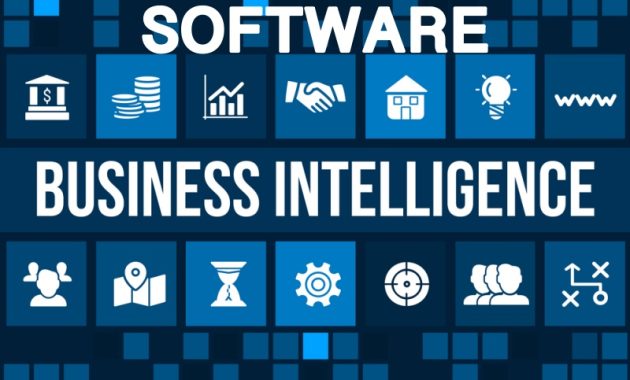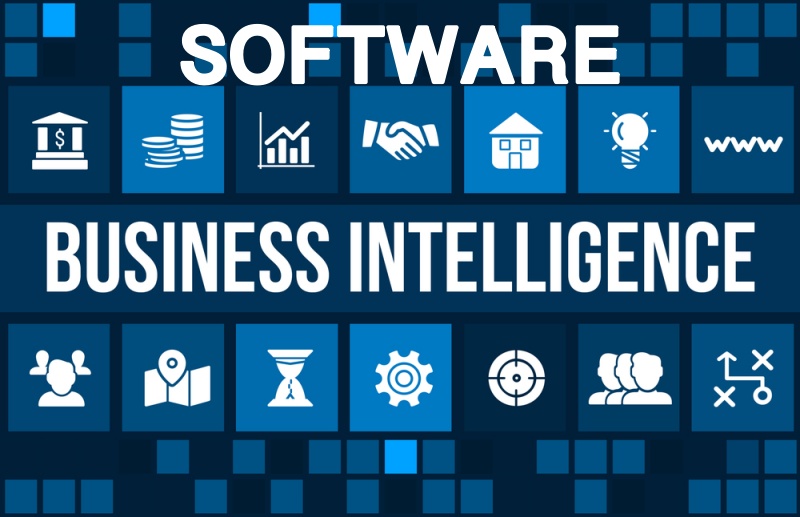
Complete Overview of Business Intelligence Software Without Complexity
In today’s data-driven world, businesses are drowning in information. But data alone isn’t enough. To thrive, organizations need to transform raw data into actionable insights. This is where Business Intelligence (BI) software steps in. This article provides a complete overview of Business Intelligence software. We’ll explore its core functions, benefits, and how it can be implemented without the overwhelming complexity often associated with it. The goal is to empower you with a clear understanding of BI and its potential to revolutionize your decision-making processes. Throughout this exploration, we will focus on making the subject matter accessible and straightforward, avoiding jargon and technical complexities where possible.
Understanding Business Intelligence
At its core, Business Intelligence (BI) is the process of collecting, analyzing, and interpreting data to provide valuable insights that inform business decisions. It’s not just about collecting data; it’s about understanding what the data means. BI software serves as the primary tool for this process. It encompasses a range of technologies and applications designed to gather, store, analyze, and present business data in a way that is easy to understand and act upon.
The evolution of BI has been significant. Early systems were often complex and required specialized skills. Today’s BI software solutions are designed to be more user-friendly, offering features like drag-and-drop interfaces and automated reporting. This shift makes BI accessible to a broader range of users, from business analysts to executives. The primary aim of Business Intelligence software is to provide decision-makers with the right information at the right time.
Key Components of Business Intelligence Software
BI software typically includes several key components that work together to deliver comprehensive data analysis and reporting. These components are crucial to the overall functionality and effectiveness of the software.
- Data Collection and Integration: This involves gathering data from various sources. These sources include databases, spreadsheets, cloud services, and other business applications. The software then integrates this data into a unified view. This integrated view is essential for comprehensive analysis.
- Data Warehousing: A data warehouse is a central repository for storing data. It is optimized for analytical queries and reporting. Data warehousing ensures data consistency and accessibility.
- Data Analysis and Reporting: This component allows users to analyze data. Tools include dashboards, reports, and data visualization. These tools help users identify trends, patterns, and anomalies.
- Data Visualization: Data visualization transforms data into charts, graphs, and other visual representations. This makes it easier to understand complex data sets. It is key to identifying insights quickly and effectively.
- Performance Management: BI software often includes features for monitoring key performance indicators (KPIs). This helps businesses track their progress toward their goals. These KPIs provide insights into business performance.
Benefits of Using Business Intelligence Software
Implementing BI software offers a wide array of benefits that can significantly improve business performance. These advantages span various departments and functional areas.
- Improved Decision-Making: BI provides data-driven insights. These insights lead to better-informed decisions. Decision-makers have access to comprehensive data.
- Increased Efficiency: Automation of reporting and analysis tasks saves time and resources. Automating processes improves operational efficiency.
- Enhanced Customer Understanding: BI helps businesses understand customer behavior and preferences. This helps in tailoring products and services. This customer understanding enhances customer satisfaction.
- Competitive Advantage: By understanding market trends and customer needs, businesses gain a competitive edge. This is done by making better decisions. They react faster to changes.
- Cost Reduction: Identifying inefficiencies and optimizing processes can lead to significant cost savings. This helps in streamlining operations. Better resource allocation is also possible.
- Better Forecasting: Predictive analytics capabilities enable businesses to forecast future trends and outcomes. This helps in proactive planning. It also enables better risk management.
The benefits of Business Intelligence software are clear. It empowers businesses to make better decisions. It improves efficiency and fosters a competitive edge.
Types of Business Intelligence Software
The market offers a variety of BI software solutions. Each caters to different needs and organizational structures. Understanding these types is crucial for selecting the right software for your business. The choice depends on various factors. These factors include the size of the business, the industry, and the specific needs.
- Dashboarding and Reporting Tools: These tools focus on creating interactive dashboards and reports. They offer real-time data visualization and reporting. These tools are ideal for monitoring KPIs and tracking performance.
- Data Visualization Tools: These tools specialize in creating visually appealing charts and graphs. They help users explore data and identify patterns. Data visualization tools are great for data exploration and communication.
- OLAP (Online Analytical Processing) Tools: OLAP tools allow for multi-dimensional data analysis. They enable users to drill down into data and explore different perspectives. These tools are useful for in-depth analysis.
- Data Mining Tools: Data mining tools use advanced analytics techniques to discover patterns and trends. These tools are used to predict future outcomes. They are used for predictive analysis.
- Self-Service BI Tools: These tools are designed for business users with limited technical skills. They offer user-friendly interfaces and drag-and-drop functionality. They empower users to perform their own analysis.
Choosing the right type of Business Intelligence software is crucial. This depends on the specific needs of the business.
How to Implement Business Intelligence Software Without Complexity
Implementing BI software doesn’t have to be a complex undertaking. By following a structured approach and focusing on simplicity, businesses can achieve significant results without overwhelming their teams. This is a crucial aspect for successful adoption.
- Define Clear Objectives: Before implementing any BI software, clearly define your business goals. Determine what questions you want to answer with the data. This will guide the selection process and implementation.
- Start Small and Scale Gradually: Begin with a pilot project or a small subset of data. This allows you to test the software and gain experience. Scale up as you gain confidence and see value.
- Choose the Right Software: Select a BI tool that aligns with your business needs. Consider factors like ease of use, scalability, and integration capabilities. Prioritize user-friendliness.
- Focus on Data Quality: Ensure the data you use is accurate, consistent, and reliable. Data quality is critical for generating meaningful insights. Implement data validation processes.
- Provide Training and Support: Train your employees on how to use the software. Provide ongoing support to help them overcome challenges. Training ensures effective use.
- Embrace a User-Friendly Approach: Opt for BI tools with intuitive interfaces and drag-and-drop functionality. This reduces the learning curve and encourages adoption. Simplify the user experience.
- Prioritize Data Security: Implement robust security measures to protect sensitive data. Data security is paramount. Comply with relevant regulations.
- Regularly Evaluate and Optimize: Review your BI implementation regularly. Make adjustments as needed to improve performance and value. Continuous improvement is essential.
By following these steps, businesses can successfully implement Business Intelligence software. It can be done without the complexity that often accompanies such projects.
Best Practices for Business Intelligence Software Implementation
Successful implementation of BI software requires more than just choosing the right tool. Following best practices ensures that you maximize the value of your investment and drive meaningful results. These practices help in smooth deployment.
- Involve Stakeholders: Engage stakeholders from different departments. This helps in gathering requirements and ensuring adoption. Collaboration is key to success.
- Establish Data Governance: Implement data governance policies to ensure data quality. Data governance is crucial for data integrity. This improves data reliability.
- Prioritize Data Visualization: Use effective data visualization techniques. This helps users understand data quickly. This improves data interpretation.
- Automate Processes: Automate data collection, reporting, and analysis tasks. Automation saves time and improves efficiency. This reduces manual effort.
- Provide Regular Updates: Keep the software updated with the latest features and security patches. Regular updates ensure optimal performance. This also keeps the software secure.
- Measure ROI: Track the return on investment of your BI implementation. This helps justify the investment and identify areas for improvement. ROI measurement is important.
- Foster a Data-Driven Culture: Encourage a data-driven culture throughout the organization. Encourage decision-making based on data. Promote data literacy.
Adhering to these best practices will enhance the effectiveness of your Business Intelligence software implementation.
The Future of Business Intelligence
The future of Business Intelligence is dynamic and evolving. Several trends are shaping the landscape. These trends promise to transform how businesses use data. The focus is on advanced analytics and accessibility.
- Artificial Intelligence (AI) and Machine Learning (ML): AI and ML are being integrated into BI tools. These integrations enable predictive analytics and automated insights. This enhances decision-making.
- Cloud-Based BI: Cloud-based BI solutions are becoming more popular. They offer scalability and accessibility. This reduces the need for on-premise infrastructure.
- Self-Service BI: Self-service BI tools will continue to evolve. They will become more user-friendly. This empowers more users to analyze data.
- Data Democratization: The trend toward making data accessible to everyone in the organization will continue. This is key to fostering a data-driven culture.
- Focus on Data Storytelling: The ability to communicate insights through data storytelling will become increasingly important. This makes data more engaging. It also improves understanding.
The future of Business Intelligence is bright. It promises more powerful tools and greater accessibility.
Conclusion
Business Intelligence software is an essential tool for modern businesses. By understanding its core functions, benefits, and implementation strategies, organizations can harness the power of data. They can transform it into actionable insights. This allows them to make informed decisions. This leads to improved performance. By choosing the right software and following best practices, businesses can unlock the full potential of BI. They can achieve their strategic goals. The key is to embrace a user-friendly approach and focus on data quality. This will ensure success.
The journey with BI software should be easy. It should not be complex. It should be accessible. It should be transformative.
[See also: How to Choose the Right BI Software, Data Visualization Best Practices, The Role of Data Governance in BI]

